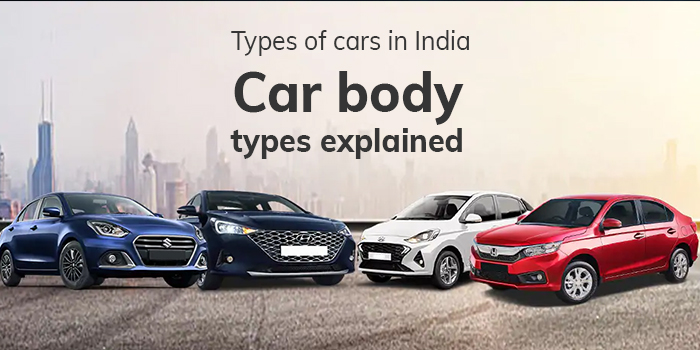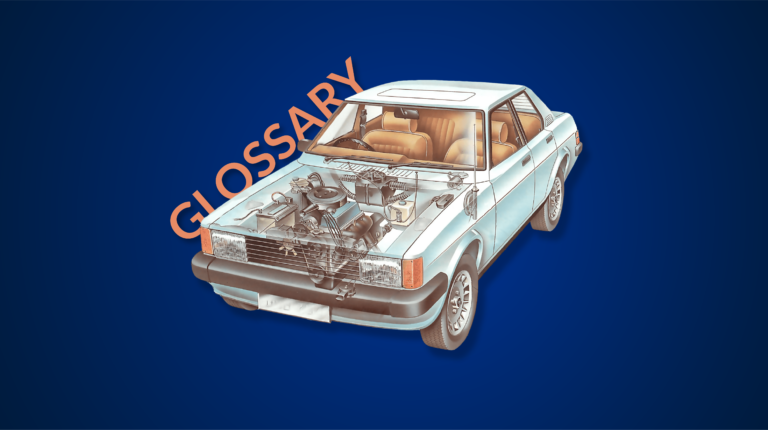
It is easy to delay your car service when the time is due. As long as your car doesn’t give you any problems, is reliable and sounds like it should be working fine, we don’t give it a second thought. The question is, how often should you get your car serviced at an authorised service station?
Like all drivers, you want to take care of your car and keep it in the best possible condition. You may also want to know when is the best time to get your car serviced or how often you should service your car.
Various sources will tell you different things, but the best solution is to refer to your owner’s manual for the service booklet to follow the manufacturer’s maintenance schedule.
What is a Car Service?
A car service is a routine maintenance activity, like a health check for your car, that checks everything from the vehicle engine fluids, to other components for wear and tear. Parts are replaced or repaired depending on which is best and the car is kept running safely and efficiently.
Getting your car routinely serviced saves money in the long run because it gets rids of problems before they can become serious issues. It also helps keep your car running smoothly, for example, changing oil and filters help get rid of dirt in your engine’s internals, keeping it running in the best possible condition.
If you don’t get your car serviced on time, you may see that performance and parts deteriorate over time and can lead to safety issues or maybe a breakdown when you least expect it.
How Often Should You Get Your Car Serviced?
Modern cars have warning lights that illuminate on the instrument panel when the car is due for a service. These warnings are usually triggered by low engine oil levels, an overheating engine, and it is largely governed by the ECU (engine control unit) that monitors and controls the state of all major components in the car.
For older cars, the process is a little bit more complicated because you have to keep your eye on the odometer to see how many kilometres the car has run, what is the state of the engine based on the oil level (which you have to check manually), and very often you will be spending more time under the hood than in the driver’s seat.
The easiest way to solve these problems is to have a look at your service booklet in the owner’s manual and follow the guidelines listed there. It will tell you when exactly to get your car serviced, what to look out for, all the service intervals, maintenance tips and service activities.
The basic rule of thumb states that the car should get a complete and thorough service every 6 months or 10,000 km, whichever comes first.
Even if the car has not run too many kilometres, and has only been used for short supermarket runs in the span of 6 months, fluids like engine oil will at least have to be topped-up because they are susceptible to evaporation and degradation over time.
The most important fluids to check in a car are the engine oil, brake fluid, clutch hydraulic fluid, engine coolant or antifreeze, and transmission fluid in the case of an automatic gearbox.
What Happens to the Vehicle if It is Not Serviced?
Driving experience can be severely compromised if you don’t get your car serviced on time. Components and equipment may need adjustment and repair during a service or they may lead to complete failure in the long run without regular service.
The car can suffer from poor fuel economy, inadequate driving experience, and may lead to major mechanical failure if the issues are not solved.
You may be aware of the term ‘adverse driving conditions’ which put more stress and strain on your vehicle and warrant a service to make sure components do not fail and cause a breakdown.
Continuous starting and stopping, like when driving in congested city traffic, (for example a post office / courier vehicle that has to make multiple stops on a single journey) or towing a heavy load like a caravan or another car are all considered adverse operation conditions. Vehicles that are driven in such a manner require more frequent servicing at periodic intervals in order for them to run efficiently.
These types of vehicles may require serving every 3 months or 5,000 km, whichever occurs first.
What Does a Car Service Include?
For those of us not mechanically inclined, it might be a hassle to learn about what goes into a car service every time you take your vehicle over to the service centre. But knowing the basics of car maintenance keeps you well informed and can work out in your favour in the long run when you need to identify problems before they occur or to advise the technician on which areas are creating issues for you.
You also have to make sure that you get your car in the best condition possible and have a better understanding of what is happening to your car when it is in the service station.
Cars have a minor maintenance schedule and a major maintenance schedule. Minor services take place every 10,000 to 15,000 km and depending on the model and make of the vehicle, a major service is conducted at around 30,000 km. If the car has run a considerable number of kilometres or been through rough terrain, then a service may be required earlier than this depending on how the car was driven or as per the technician’s recommendation.
The service depends on how the car has been driven, for example, if it was mainly for city driving, then there would have been continuous starting and stopping which would lead to certain components being inspected and serviced besides the regular, basic servicing activities.
Regular Service
This includes a 360-degree visual inspection of the vehicle, engine oil change and oil filter replacement. The basic engine fluids like the coolant (anti-freeze), brake fluid, transmission fluid (if the car has an automatic gearbox), wiper washer fluid, and steering fluid (power steering fluid) are topped up.
There are certain points on the vehicle that are checked out like the battery, headlights, wheels, steering, air-conditioning unit, brakes, suspension, tail lamps, electricals, gearbox, and usually 35 other components are looked at during a regular service.
All components are checked as per the manufacturer’s guidelines. If the car needs any additional service, it is carried out at the service centre, or may be sent to a specialist’s centre to rectify any problems.
Complete Service
A full-service touches upon additional areas that were not covered in the basic service. The car will have maintenance work carried out on it which will come at an additional cost. Services like wheel alignment, wheel balancing, compression tests, sensor test, airbags and safety checks are carried out.
Major Service
This kind of service includes everything the full services comprises, however it also includes a change of fuel filters, replacement spark plugs, and other items that need to be replaced due to normal wear and tear of components.
Manufacturer’s Service
This is the most thorough and complete service that a vehicle can undergo and includes all maintenance and service activities for a comprehensive overhaul. It is expensive and has an extensive range of checks which include:
- Oil change and oil filter replacement
- Brake fluid top-up
- Windscreen washer fluid top-up
- Coolant check and top-up
- Brake pads and drums check-up and repair/replacement
- Power steering fluid check
- Rack and pinion (steering) check
- Suspension check and shock absorber observation
- Electrical and electronics check
- Headlights and tail lights plus indicators check
- Wheel alignment and balancing
- Tyre tread check
- Exhaust System check
- Battery and charging system check
- Tyre pressure check
What Are the Advantages of a Car Service?
Cars are serviced to repair or replace components that are worn out, so that the car can run smoothly and be reliable enough to be a daily driver. Services ensure components that are subject to wear and tear are taken care of.
It Saves You Money in the Long Run
When small issues are fixed before they can turn into major concerns, it saves a lot of money in the long run. Although you will spend some money fixing a small issue, the same problem could end up becoming very expensive if left unattended. Instead of a small repair, the component may have to get replaced which incurs more cost and time.
For example, a simple oil change will ensure that components in the engine don’t get worn out, which may prevent the whole engine from breaking down in the long run.
Big Savings With Good Fuel Economy
A car that has been serviced according to the correct periodic schedule will be more affordable to run. Components in the engine will work at their optimum, tyres are well balanced and aligned providing the least friction with the road. Brakes are strong and do not drag which inhibits driving. Fuel filters are clean and fuel pumps work like new which will give you good fuel economy and make the engine efficient. Topping up coolant levels will ensure the engine doesn’t overheat and waste fuel.
Lifespan of the Vehicle
A car that is well maintained will have a longer lifespan than a car that has been neglected. It will stay roadworthy for a longer period of time which means the driver will not be looking to buy another new car anytime soon. It is also a pleasure to drive a well-maintained car because it feels like new and can be driven without much effort. The car also remains reliable and can be used as a daily driver.
Resale value
When it comes time to sell the car, the resale value will be higher for a car that has a thorough and complete service history from an authorised dealership. If all the documents are not in place and there were times when the car was given to a local technician for repairs, the value of the car will drop because there is no guarantee on the services provided. In fact the warranty on the car is considered void if the car is serviced at a garage that is not authorised by the manufacturer, often because they replace components with spurious or duplicate spare parts that may turn out to be a safety issue.
Insurance
If a car meets with an accident and the vehicle is considered a write-off (that is, it cannot be repaired and must be scrapped) then the insurance company will value the written off vehicle based on its service history. If the car has a complete service history at an authorised service station, then it will be valued at a higher rate than a car that was serviced at a local mechanic’s garage.
Conclusion
A car that is serviced regularly at an authorised service station is always better off than a car that is neglected and repaired only when absolutely necessary. The driver can request for a log of all the work completed on the car, including all the components replaced or repaired, consumables like oil and other fluids topped up, and also the breakdown of the costs involved for each individual task.
Each car has its own servicing needs and the type of service varies from model to manufacturer. The easiest way to navigate through all of this is to keep a close eye on the owner’s manual which details all the activities that must be carried upon the vehicle for proper functioning of it.
Before the car is taken in for a service, have a chat with the service manager and list out all the problems you are facing and listen to what the works manager advises based on his preliminary inspection. Once the service is completed, compare it to what was discussed to see if all the issues have been looked into.






